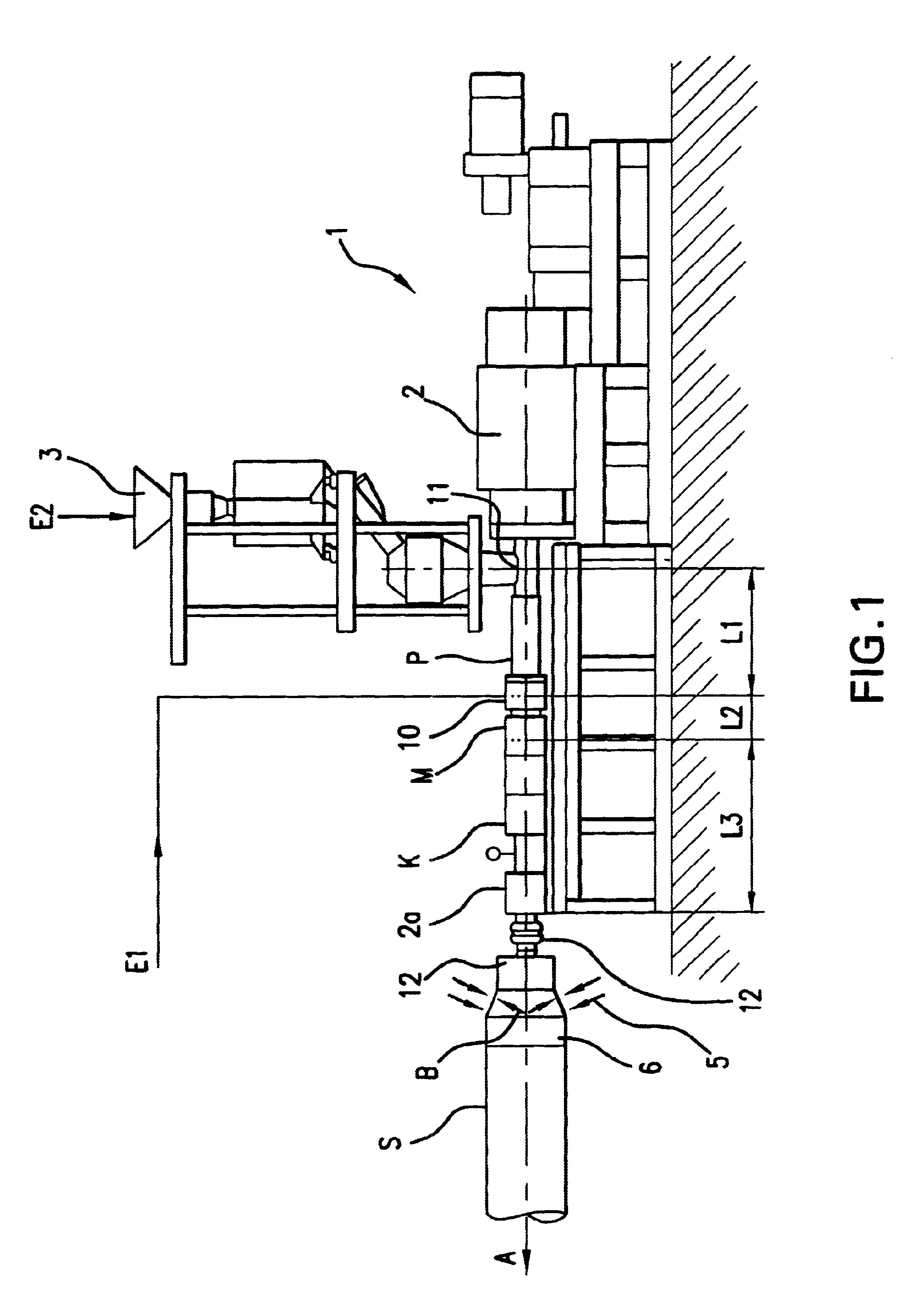Method and device for producing at least partially open-celled foam films from styrene polymers
a technology of styrene polymer and foam foil, which is applied in the direction of containers, applications, medical science, etc., can solve the problem of cell openness
- Summary
- Abstract
- Description
- Claims
- Application Information
AI Technical Summary
Benefits of technology
Problems solved by technology
Method used
Image
Examples
example
A formulation consisting of 100 parts by weight of styrene polymer, 1.4 parts by weight of a nucleating agent of a mixture containing 55 wt.-% of citric acid and bicarbonate and of a decomposition temperature higher than 160.degree. C., and 45 wt.-% of an acrylate-polymer binder, as well as 2.5 parts by weight of an alkyl sulfonate as the surfactant, and 1.9 parts by weight of HDPE granules as the foreign polymer, was fed at a screw rotation rate of 30 rpm into a twin-screw extruder with two identical parallel screws, which rotate in the same direction, each of a diameter (D) of 85 mm, via a metering device at 200 to 250 kg / h. The polymer was completely plastified in the draw-in and plastification zone of a length of 15 D and heated to a temperature between 220 and 270.degree. C. At the end of the draw-in and plastification zone at a temperature of approximately 220.degree. C., 3.5 parts by weight of n-butane as the physical foaming agents were injected at a pressure of 65 bar into ...
PUM
| Property | Measurement | Unit |
|---|---|---|
| temperature | aaaaa | aaaaa |
| pressure | aaaaa | aaaaa |
| temperature | aaaaa | aaaaa |
Abstract
Description
Claims
Application Information
 Login to View More
Login to View More - R&D
- Intellectual Property
- Life Sciences
- Materials
- Tech Scout
- Unparalleled Data Quality
- Higher Quality Content
- 60% Fewer Hallucinations
Browse by: Latest US Patents, China's latest patents, Technical Efficacy Thesaurus, Application Domain, Technology Topic, Popular Technical Reports.
© 2025 PatSnap. All rights reserved.Legal|Privacy policy|Modern Slavery Act Transparency Statement|Sitemap|About US| Contact US: help@patsnap.com


